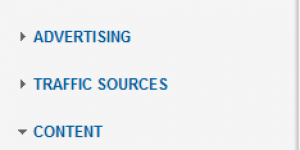
Surviving Google Panda and Penguin Updates, 2 Client Success Stories
Google’s Panda 3.5 and 3.6 updates, along with the Penguin update, in April of 2012 had a devastating impact for search rankings on many websites. Many reported traffic drops of as much as 85% and search rankings dropping from page one to to the basement. Esotech and our clients were very fortunate to have been unscathed by Panda and Penguin. All of our clients either held steady or increased through both updates, with just one client having a small rankings drop that is now climbing again. Here are two examples of websites that not only survived Panda and Penguin, but actually thrived after the updates and increased their search rank positions. Below are search rank summaries for two of our clients are shown a travel company and a marine manufacturing company. Search rankings are shown for April, the month that Panda 3.5/3.6 and Penguin were released and had the most dramatic impact. We also show search rankings in July roughly 3 months after the infamous Panda and Penguin updates. In both cases search rankings for these websites increased overall. In our next blog post we will talk about what to do if you have been Panda-Penguin Slapped and how to avoid Google penalties. Example 1: Travel Company – highly competitive market We developed the SEO and SMO (Social Media Optimization) campaign for this client long before the Panda and Penguin updates came out. Our SEO strategy for this involved building an SEO friendly website with an well thought out Information Architecure, quality content, and On-Site SEO to ensure all the pages are blogs are constructed properly. We also had a solid Off-Site SEO campaign for this client that focused on high quality and diverse link building. The results speak for themselves, quality websites, with excellent content, and professional SEO always do well. Search Engine Rank Position (SERP) April 2102 – immediately after Panda and Penguin Updates The search engine rank summary below shows the rankings for this travel site after the Penguin update. What is remarkable here is that they retained 38 page one positions and 17 positions in the top 3 on page one. SERP April through July 2012 Here are the search rankings 3 months after the Panda and Penguin updates, and again remarkable results. While many other sites had not recovered or even dropped further, this site increased its search rankings overall. Three words did drop out of the top 3 position, but page one words increased from 38 to 42. Example 2: Marine Manufacturing Company – very strong competitors We also developed the SEO and SMO campaign for this client long before the Panda and Penguin updates, and again strategy involved an SEO friendly website, Information Architecure, quality content, and On-Site SEO. This client had a very robust Off-Site SEO campaign since they are new in the business and competing against a very well established competitor with excellent search rankings. Once again, the results speak for themselves… Search Engine Rank Position (SERP) April 2102 – immediately after Panda and Penguin Updates The search engine rank summary below shows the rankings for the marine manufacturers website after the Penguin update. Again, remarkable results, they retained 25 page one positions and 8 positions in the top 3 on page one. SERP April through July 2012 Here are the search rankings 3 months after the Panda and Penguin updates, and remarkable results again. This site increased its search rankings overall, page one words increased from 25 to 30, and top 3 words on page one increased from 8 to 16!
Read more








